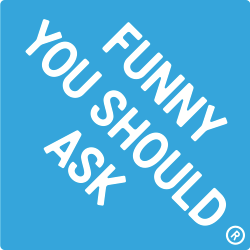In a previous post about a digital marketing lab in Singapore, I realized I should probably structure and share some of my thinking and learnings having discussed, presented, debated, consulted on, workshopped around and taught digital strategy.
So, the reason for this first of a few posts is for a number of reasons:
1) Deconstructing a couple of slides used in workshops and talks, in order to structure what I believe is often overlooked and missed. It’s good for myself to do it.
2) If we’ve had a workshop together or if you listened to a presentation I gave – Hello! Here are some things we touched on if you feel like a refresh or if there was a language/speed problem. You should have the full presentation already.
3) Basically, why not share it beyond rooms of people.
So here goes number 1.
The first, and most important, thing to reflect on when approaching digital strategy
the blogpost Can you invent something new if your words are old, Deborah Mills-Scofield highlights the power words have over us. She’s a consultant in innovation. But not only in innovation is that important. It goes for politics, pedagogy, and our dear subject digital strategy.
Part 1 touches on slide 2-4
Because – what do we think when we think digital? Words and definitions, knowingly or not, frames and maybe even dictates, how we think. And how we think, well, that very much guides what we do and don’t do. As Kevin Spacey put it, TV is simply episodically punctuated video streams. From that, what can you (and disruptors did) imagine?
Add to that, you’ll be in a room of people, perhaps from different parts of and organisation with different agendas, ambitions and painpoints. This further necessitates a discussion around, and a common view on, what it is we’re digging into.
– So, what would you say digital strategy is (yes, that’s how rudimentary my question is)? Take 3 minutes and try to articulate it concretely. Write it down if it helps.
Silence, looks, twisting in the chair. A few smiles. More looks.
– Would you care to go first?
– Hrm, well. It’s about how we communicate with the different target groups in different channels and social networks.
– OK, good. And what did you write down?
– Well, I don’t know. I wrote that it’s basically everywhere around us. It’s everything today.
– Wow, that’s quite all encompassing and massive. Personally I can nod to that. You?
– Actually, I would say that it’s our future business. Our business strategy.
– OK.
…
A typical conversation about the word digital and digital strategy. Often taken for granted as self explanatory and clear. Not so clear anymore.
Some people implicitly are talking about communication and channels, while others seem to understand it as something that’s basically everything. While some are very clear about the fact that it’s the future business strategy. Digital definitely affect communication and the communication landscape, but maybe that’s communication strategy that just happen to be hightly “digital” today? And surely we can agree that “digital” is effecting more or less every aspect of society today, and hence is everywhere. As a consequence it has to be taken into account when thinking about ones (future) business model, revenue models and business strategy. It’s all obviously correct, but until the whole room realises this, and recognizes the complexity (but also opportunity) in this observation, getting constructive and solution focused is useless.
The reality in which we strategise is networked. Networked is a very useful word as opposed to digital because it more clearly stresses the fundamental shift, change and impact (probably not the originator, but the guy I associate with stressing the benefit of using networked is Mark Comerford, @markmedia) in a way that we can feel and see as we mention it. If I’m in a store shopping and I’m all connected – is there brick and mortar vs e-commerce? Yes. Is there offline vs. online? No. From a networked perspective, that dichotomy is flawed and reframing this makes all the difference.
This is why the great variety in response to digital strategy is so natural. We see it from different angles. It’s like the proverbial elephant and the blind men. PR people see one thing, service design folks another and e-commerce managers yet another, and so on. The solution to this is to discuss ones business and reality from a networked perspective. This way, you’ll see the integrated and holistic nature of digital strategy.
These two activities are my suggestion for a start.
- Mind the words you use (in general) in this case digital strategy specifically. Dig deeper into what we take for granted (I’ll touch on that again from another perspective). Understand the lens through which you see the concept, and understand what you don’t see.
- Approach the project as strategic thinking in a networked world. That means departments, stakeholders, business units and even the business model itself, will reveal those clear connections and the need/power in approaching everything as an integrated totality. This can come across as massive and frustrating, but it’s also where the true power of a digital strategy lies.
More on that in the next post. Thoughts and comments are more than welcome.

